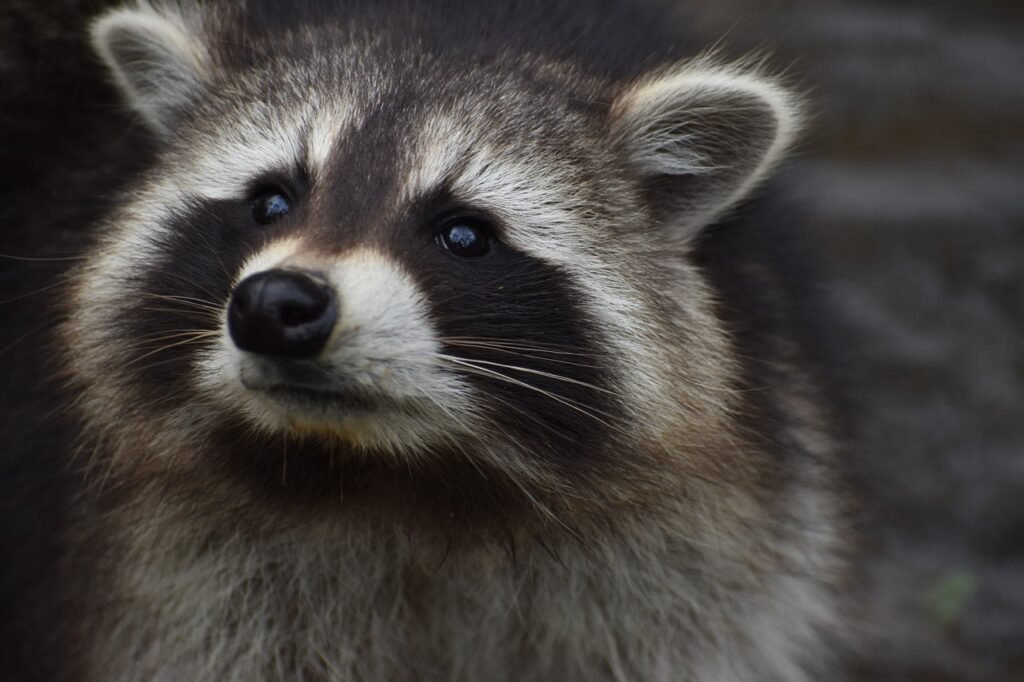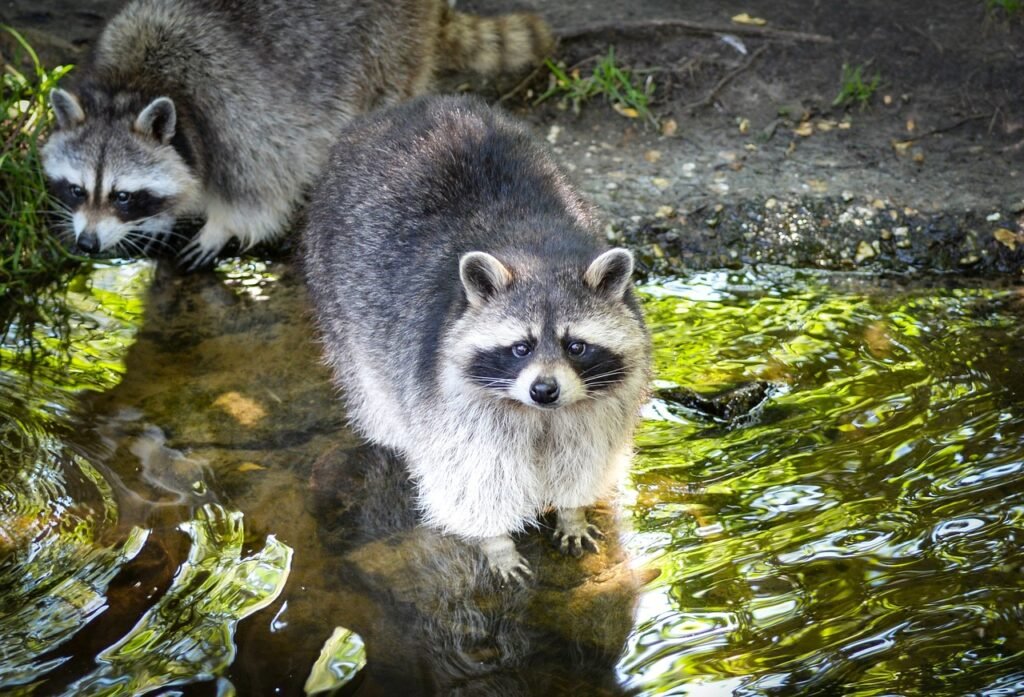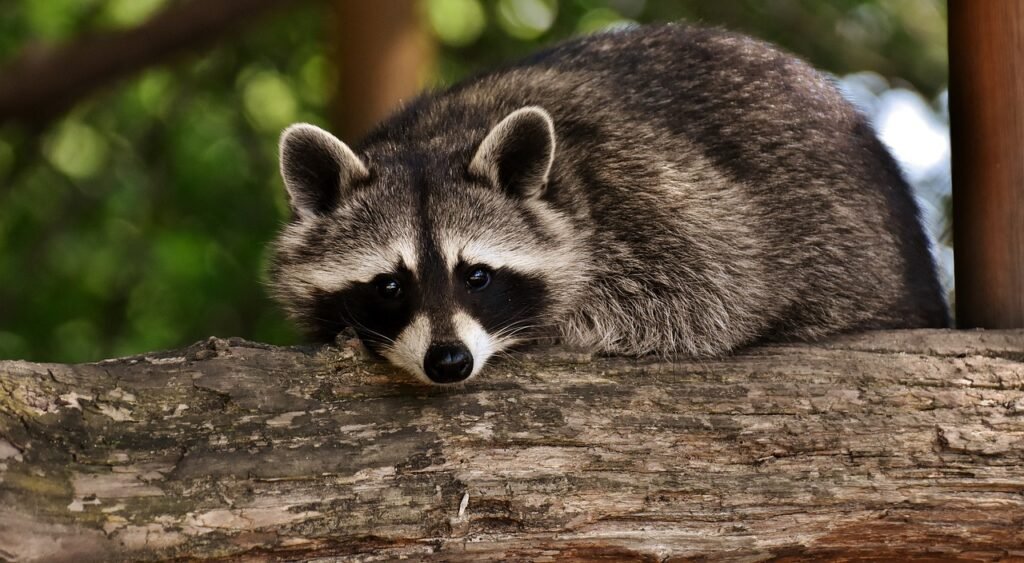Raccoons in Urban Environments: Adaptation and Survival. Raccoons are among the most adaptable wildlife species, thriving in diverse habitats, including urban environments. Originally forest-dwelling animals, raccoons have increasingly found their niche in cities and suburban areas. Their success in urban settings can be attributed to several key factors, including their opportunistic feeding habits, problem-solving abilities, and adaptable behaviors. The urban legacy of raccoons comes from their enduring success no matter where humanity goes next.

Adaptation to Urban Life
Raccoons are omnivorous and highly opportunistic feeders. In their natural habitats, they consume a varied diet including fruits, insects, small vertebrates, and plant material. In urban environments, their diet expands to include human refuse, pet food, and garden produce. The availability of these new food sources allows raccoons to thrive in cities where food resources might otherwise be scarce.
Urban areas provide raccoons with an abundance of food in the form of garbage, compost bins, and bird feeders. They are skilled at foraging and have developed remarkable dexterity with their front paws, which they use to open containers and search for food. Raccoons’ ability to exploit human waste is facilitated by their keen sense of smell and dexterity, making them adept at rummaging through trash cans and dumpsters.
Behavioral Adaptations
Raccoons have evolved specific behaviors that enable them to navigate and survive in urban environments. One notable adaptation is their nocturnal nature. Being primarily active at night helps raccoons avoid human activity and predators. This nocturnal lifestyle also allows them to forage when food sources are most abundant and when they are less likely to encounter disturbances.
Their problem-solving skills are another critical adaptation. Raccoons are known for their intelligence, which is comparable to that of primates. They can learn how to manipulate objects and solve complex problems, such as opening latches on garbage cans or unlocking containers. This cognitive flexibility enables them to adapt to new challenges and take advantage of novel food sources in urban settings.

Shelter and Nesting
Urban environments offer various shelter options for raccoons. They are highly adaptable in choosing nesting sites, using structures like attics, chimneys, and basements in residential buildings. Abandoned buildings and urban parks also provide suitable nesting sites. Raccoons often find shelter in areas that offer protection from predators and harsh weather conditions. Their ability to make use of human-made structures for nesting and resting is a key factor in their urban success.
Raccoons’ adaptability extends to their breeding habits. In urban areas, they can produce multiple litters per year, increasing their chances of population growth. Urban raccoon populations can grow quickly due to the availability of food and shelter, as well as the relatively low presence of natural predators.
Human-Raccoon Interactions
The presence of raccoons in urban environments often leads to human-wildlife conflicts. Raccoons can be a nuisance to some, causing damage to property, spreading diseases, and creating sanitation issues. Their propensity to scavenge and invade homes can lead to costly repairs and health concerns. Urban areas provide raccoons with ample opportunities to come into contact with humans, which can lead to direct conflicts.
To mitigate these issues, cities and homeowners can implement various strategies to manage raccoon populations. Proper waste management practices, such as using raccoon-proof trash containers and securing compost bins, can help reduce the food sources available to raccoons. Education about keeping pet food indoors and sealing entry points to homes can also minimize conflicts. In some cases, wildlife control professionals may be needed to address specific problems and safely remove raccoons.
The urban legacy of raccoons also upholds the fact that humans are fascinated with them. Raccoons are wild animals and any interactions should come from a wildlife expert’s advise. Some humans do choose to build relationships with raccoons and find them to be positive and enriching. The lives of raccoons are important and the role they play in human urban environments should be considered in urban planning.
Environmental Impact
The presence of raccoons in urban areas can have mixed effects on local ecosystems. On one hand, they can help control populations of certain pests and contribute to the ecological balance. On the other hand, their foraging habits can lead to the spread of diseases, such as raccoon roundworm, which can affect both wildlife and humans.

Raccoons have demonstrated remarkable adaptability and resourcefulness in urban environments. Their success is due to their omnivorous diet, nocturnal behavior, problem-solving abilities, and flexible nesting habits. While their presence in cities can lead to human-wildlife conflicts, understanding their behaviors and implementing effective management strategies can help mitigate negative impacts and promote coexistence. As cities continue to grow and expand, raccoons are likely to remain a prominent feature of urban wildlife, showcasing their resilience and adaptability in the face of changing environments.